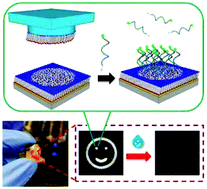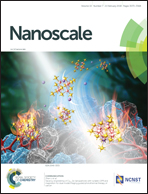Self-standing aptamers by an artificial defect-rich matrix†
Abstract
The classical alkanethiol post-passivation can prevent nonspecific binding of nucleotide bases onto supporting substrates and help aptamers transition from a “lying down” to a “standing up” orientation. However, the surface probes display lower binding affinity towards targets than those in bulk solutions due to unsatisfied hybridization spaces on the alkanethiol passivated substrate. To overcome this challenge, an artificial defect-rich matrix possessing an aptamer “self-standing” property created by chemical lift-off lithography (CLL) is demonstrated. This approach provided artificial defects on a hydroxyl-terminated alkanethiol self-assembled monolayer (SAM), which allowed the insertion of thiolated aptamers. The diluted surface molecular environment assisted aptamers not only to “self-stand” on the surface, but also to separate from each other, providing a suitable surface aptamer density and sufficient space for capturing targets. With this approach, the binding affinity of the aptamer towards a target was comparable to solution-type probes, showing higher recognition efficiency than that in conventional methods.



 Please wait while we load your content...
Please wait while we load your content...